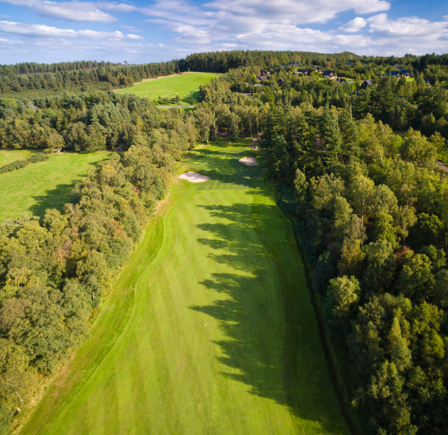
Why Pace of Play Matters & How to Keep the Game Moving
A slow round of golf can take the enjoyment out of the game - not just for you but for everyone on the course. Pace of play has been a hot topic in golf for years, and governing bodies like the R&A and USGA are actively promoting "Ready Golf" to help players speed up their rounds while maintaining etiquette.
Whether you're a weekend golfer or a serious competitor, learning how to play efficiently without rushing is a valuable skill that benefits everyone.
How Long Should a Round of Golf Take?
9 holes: Approx. 2 – 2.5 hours
18 holes: Approx. 4 – 4.5 hours
If rounds are taking closer to 5+ hours, it’s a sign that pace of play needs improvement.
7 Key Ways to Improve Pace of Play
Many golfers only start thinking about their shot when it’s their turn - this is a huge time-waster. Instead:
- Assess your shot while others are playing so you’re ready when it’s your turn.
- Choose your club early instead of walking to your ball and deciding after.
- Stand at a safe distance and line up your shot while others are hitting.
Time Saved: 30-60 seconds per shot. Over 18 holes, this adds up to 20-30 minutes!
Traditional golf etiquette dictates that the player furthest from the hole hits first, but this isn’t necessary in casual or non-match play rounds.
"Ready Golf" means:
- If a player is still walking to their ball, someone else can hit first.
- Shorter hitters can tee off while longer hitters wait for the fairway to clear.
- Putting continuously instead of marking every putt, when possible.
The R&A actively encourages Ready Golf in stroke play!
A good rule of thumb:
If the hole ahead of you is empty and you’re constantly being caught by the group behind, you’re playing too slowly.
- Walk briskly between shots - don’t stroll or chat for too long before moving.
- If using a buggy, drop your partner off at their ball instead of waiting.
- Be aware of pace - if you're slowing up, pick up the speed.
Excessive waggle swings, overthinking, and rehearsing shots too many times can dramatically slow play.
- Take one or two practice swings max.
- Trust your shot—don’t overanalyse.
Time Saved: 15-20 minutes per round.
Putting is one of the biggest contributors to slow play.
- Read your putt while others are putting so you’re ready to go.
- Putt continuously if possible, rather than marking every short putt.
- Leave your bag or trolley on the side of the green closest to the next tee to avoid backtracking.
Pro Tip: Always walk off the green quickly so the next group can play.
Many golfers play from tees that are too long for their game, leading to longer second shots, slower play, and frustration.
- If you can’t consistently reach the fairway from the tee, consider moving up a set.
- Tee it forward—playing shorter tees doesn’t make you less of a golfer; it makes the game more enjoyable.
If you’ve reached your limit consider picking up and moving on.
For example:
- On a par 3, if you’re at 6 strokes already, it’s okay to pick up.
- On a par 5, if you’ve taken 10 strokes, move on to the next hole.
Match play is different - you can play out every shot, but in stroke play or friendly rounds, speeding up play takes priority.
Play Faster, Enjoy More!
Pace of play benefits everyone—it keeps rounds enjoyable, reduces waiting time, and allows more golfers to get on the course.
Book a round at one of our seven resorts and put Ready Golf into practice!
Looking to improve your course management? Book a lesson with a PGA Professional and develop a smarter game plan.
Tag us on social media using #ReadyGolf and let us know your favourite tips for keeping the game moving!

